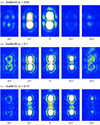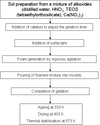issue contents
November 2007 issue

Cover illustration: An artistic view of the experimental hall of the European XFEL and laboratory complex as viewed from the incoming photon tunnels (see Vartanyants, Robinson, McNulty, David, Wochner and Tschentscher, pages 453-470).
facility information
feature articles
Free 

High-power coherent X-ray beams produced by future X-ray free-electron lasers are an ideal source for coherent X-ray diffraction imaging of nanoscale condensed matter, materials and biological samples. The scientific case, requirements and the possible realization of the coherent X-ray diffraction imaging experiments at the European XFEL Facility are presented.
research papers
Coherent X-ray diffraction measurements on gold nanocrystals were found to produce novel double diffraction patterns, which are explained in this paper.
The formation of colloidal unmodified (`naked') gold nanoparticles is investigated by irradiation of a precursor solution with X-rays from a synchrotron source.
The degree of circular polarization of soft X-rays emitted from the multi-polarization-mode undulator of BL17SU at SPring-8 was measured by means of magnetic circular dichroism in core-level X-ray absorption spectroscopy.
A cost-effective in situ synchrotron-based X-ray diffraction method to study ion intercalation into host materials from non-aqueous electrolytes has been developed. The method is based on `coffee bag' electrochemical cells and an automatic sample changer for up to 32 parallel experiments.
An in situ time-resolved high-energy X-ray diffraction study of the structural evolution of a bioactive foamed sol–gel calcia–silica glass when immersed in simulated body fluid at 310 K is reported. The dissolution of the glass and the associated formation of calcium phosphates, and finally of hydroxyapatite, is revealed.
Nitrogen K-edge XANES spectroscopy has been used to develop a systematic overview on spectral features of all major N functions in soil and environmental samples. This information provides a basis to develop N K-edge XANES to study the molecular composition and ecological functions of previously unidentified N.
Intensity observed in analyzer-based imaging is separated into scattered and non-scattered components using pseudo-Voigtian functions. Maps of attenuation, refraction angle and scattering are presented.
X-ray free-electron laser facilities under construction are all huge and expensive, consisting of high-energy linear accelerators and long undulators. This paper discusses how small a hard X-ray free-electron laser facility can be.
The parasitic scattering from a variety of window materials suitable for X-ray cryostats is characterized using small-angle X-ray scattering.
current events
Free 



 journal menu
journal menu



































